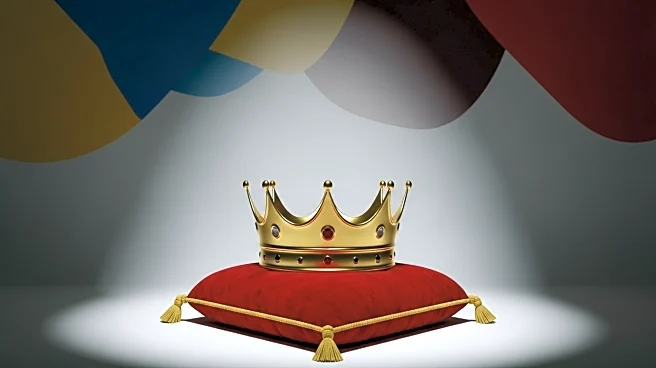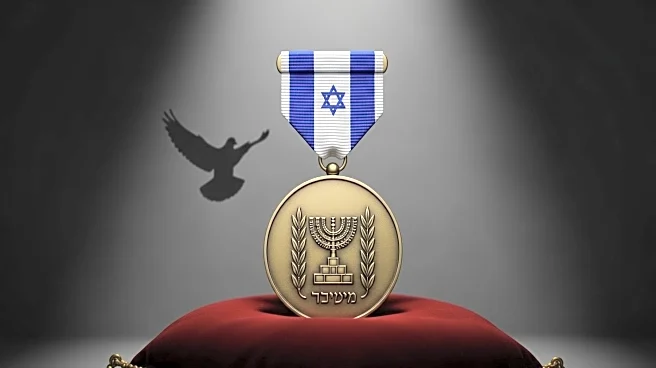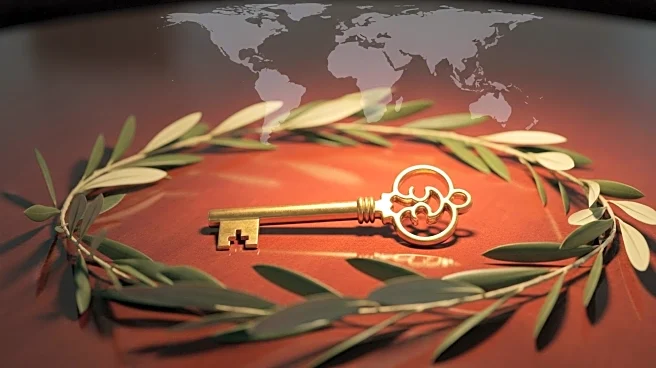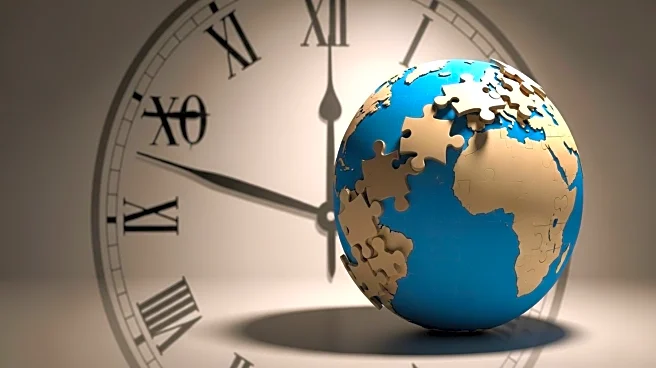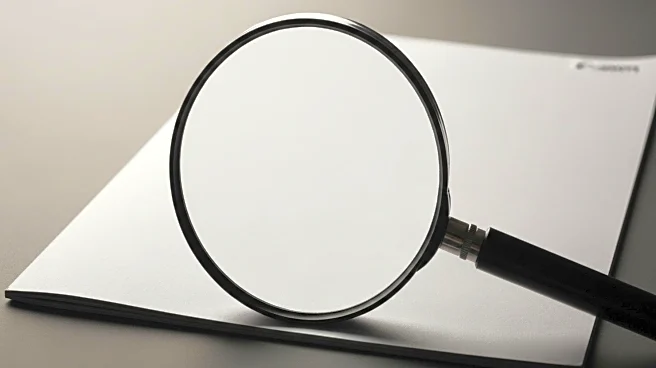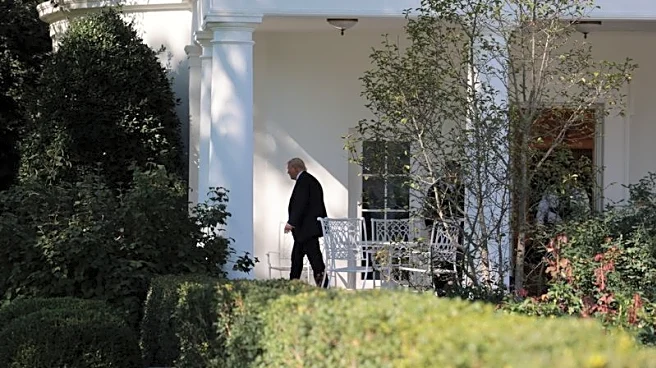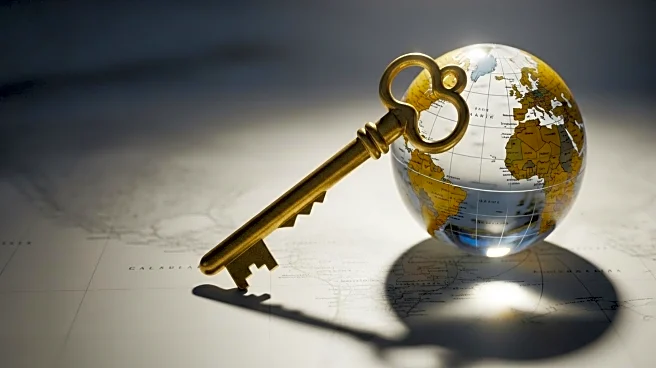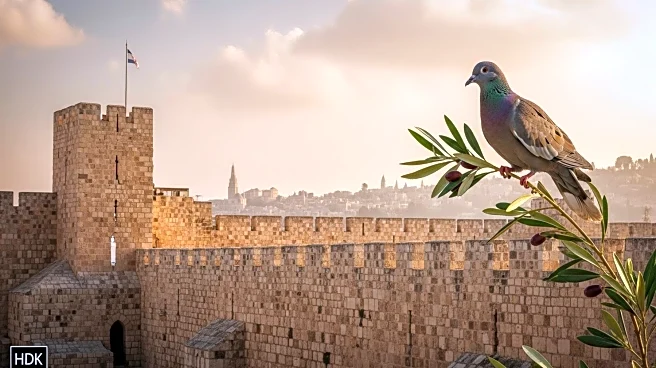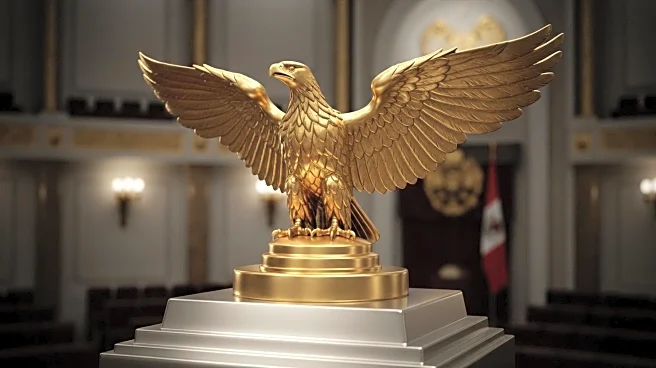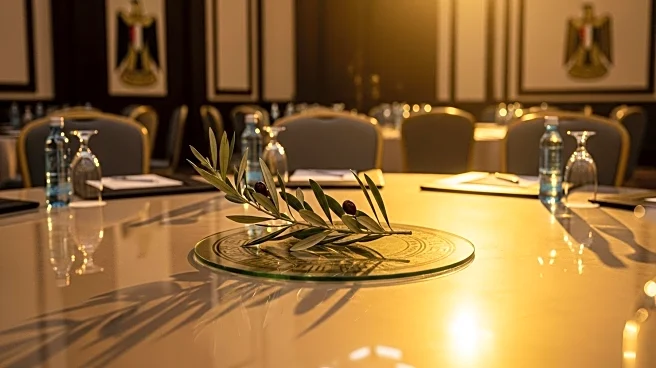What is the story about?
What's Happening?
President Donald Trump expressed dissatisfaction with Time magazine's latest cover photo, which accompanied a story about his Middle East peace deal. The cover, released on Monday, depicted Trump with altered hair and a small crown, which he criticized as 'the Worst of All Time.' Despite the magazine's positive portrayal of his peace efforts, Trump took to Truth Social to voice his displeasure, stating that the image was a 'super bad picture' and questioned the magazine's intentions. The cover story highlighted Trump's peace deal between Israel and Hamas, which was described as a strategic turning point for the Middle East.
Why It's Important?
The controversy surrounding the Time magazine cover underscores the complex relationship between media portrayals and political figures. While the magazine praised Trump's peace deal as a significant achievement, the focus on the cover photo highlights the sensitivity of public image in political discourse. This incident may affect public perception of Trump's diplomatic efforts, potentially overshadowing the substantive achievements of the peace deal. The peace agreement itself is crucial, as it marks a significant step in resolving long-standing conflicts in the Middle East, impacting regional stability and U.S. foreign policy.
What's Next?
The peace deal, signed in Sharm el-Sheikh, has already led to the release of Israeli hostages and Palestinian prisoners, formally ending two years of conflict. As the agreement progresses, further diplomatic engagements and monitoring of its implementation will be essential. Stakeholders, including international leaders and organizations, may react to both the peace deal and the media coverage, influencing future diplomatic strategies and media relations. Trump's administration may continue to address media portrayals to maintain focus on policy achievements.
Beyond the Headlines
The incident highlights the broader implications of media influence on political narratives. The portrayal of political figures can shape public opinion and affect diplomatic relations. This situation raises questions about the ethical responsibilities of media outlets in balancing accurate reporting with visual representation. The peace deal's success could lead to long-term shifts in Middle Eastern geopolitics, potentially altering U.S. involvement in the region.
AI Generated Content
Do you find this article useful?
